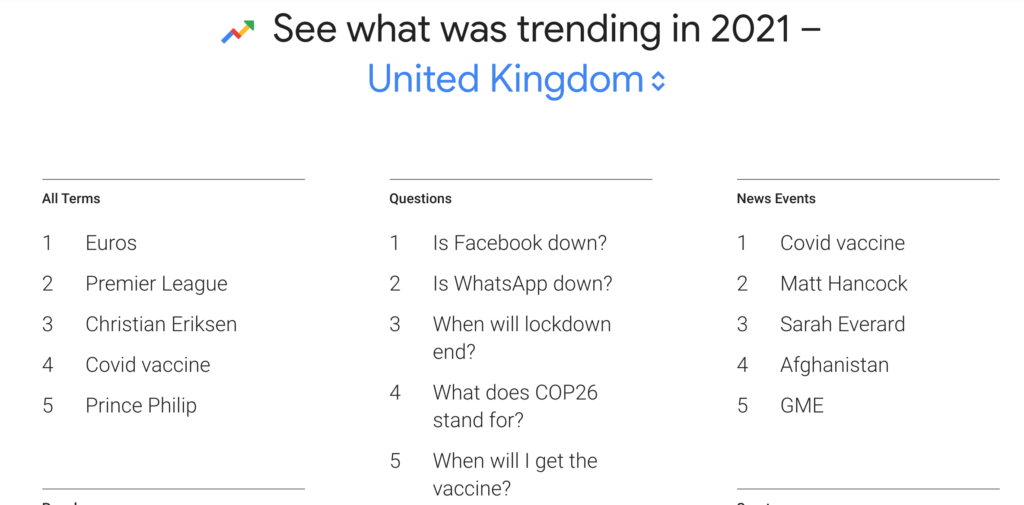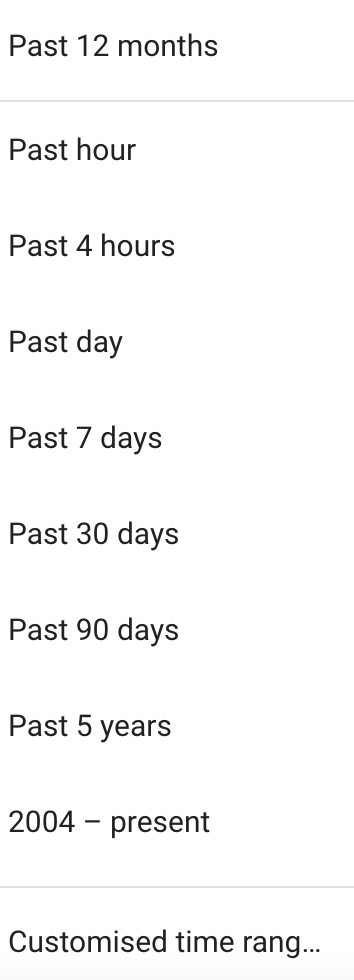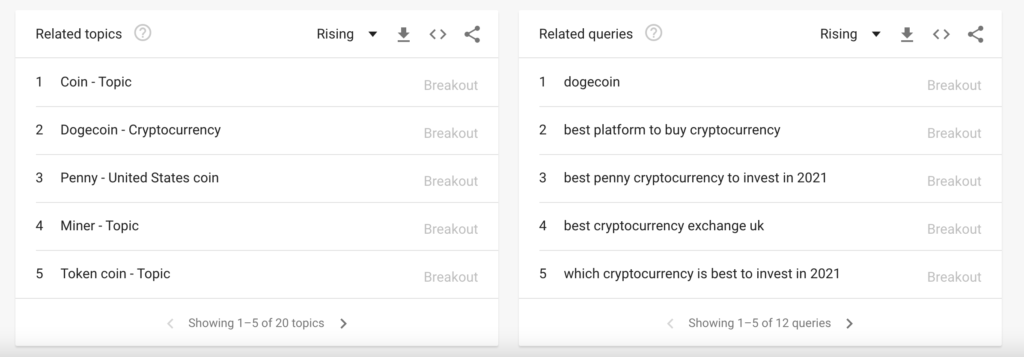What do you know about Google Trends? It’s a fun and powerful way to find out more about the ever changing landscape of people’s interests across the globe. But, believe it or not, Google Trends recently celebrated its 15th anniversary!
Much has changed since the original launch of Google Trends in 2006. In this article we explain:
- What is Google Trends?
- Six ways to use Google Trends to improve your SEO.
What is Google Trends?
Google Trends is a powerful keyword research tool that provides access to data based on samples of actual search requests made to Google.
You can view the Google Trends tool here.
Google emphasises the three key aspects of the tool as being:
- anonymised : searchers are not personally identified;
- categorised : search queries can be broken down by topic;
- aggregated : search queries can be grouped together.
Because Google Trends is based on samples of Google’s billions of searches each day, the amount of traffic generated by those searches is not shown in actual numbers, but on a relative scale.
Search options for Google Trends
Google Trends can be used to explore search trends in real time or for a specified time period, dating back to 2004. There are also options to refine your search by location, category and type of search.

Google Trends Year in Search
At this time of year there is also an overview of the previous year in search. This can be tailored to any country of choice and covers the following categories:
- All terms
- Questions
- News events
- People
- Loss
- Sport
- When?
- How many?
- Definitions
- TV
- Film
- Song Lyrics
The image below shows the first few categories for Year in Search 2021 UK

Six ways Google Trends can improve SEO
So Google Trends is interesting, and could potentially generate a lot of distraction time! But how can it be used effectively to improve SEO?
Here are six ways that we think are worth exploring:
Understand keyword trends

Google Trends can show you two kinds of search data.
-
Trending or rising searches
These are the searches that are currently accelerating the fastest.
Trending searches can be invaluable for tracking the progress of particular searches over a timescale of your choice. This gives you a clear picture of audience trends which then informs where you put your time and effort to appeal to that audience.
-
Top-searched or most-searched
These are the most-searched queries within a specific time frame. These provide helpful insights as to when certain topics tend to be most popular.
For example, if you can see the days of the week when interest in a particular topic increases, this can help with content planning related to that topic.
Understand search intent
We saw earlier that Google Trends gives you the ability to refine your search in various ways. By using the search type option, you can gain useful insight into different types of search intent.

The intent of a searcher may be very different depending on the type of search they use.
For example, a search for Christmas crackers could be made more specific depending on whether your intention is to:
-
-
-
-
-
-
-
- Find out their history (web search);
- Get ideas for the styles you like (image search);
- Read recommendations/trends this year (news search);
- Find the best place to buy them (shopping search);
- Learn how to make them (Youtube search).
-
-
-
-
-
-
If your SEO agency was trying to increase rankings for a Christmas cracker company, it would help to see the types of searches consumers are doing in order to pitch your SEO accordingly.
Explore search queries by category
In parallel with types of search, Google Trends provides the opportunity to search by category. This can help you to make your keyword research more accurate by analysing the specific things that consumers are searching for in categories related to your product or service.
For example, if you manufacture desks, it could be helpful to see different trends in several different categories, including:
- Business & Industrial
- Computers & Electronics
- Hobbies & Leisure
- Home & Garden
- Jobs & Education.
Explore search queries by location
The keyword information by location provided by Google Trends can be invaluable when planning ad campaigns, special promotions and tailored content. You will be able to understand more about which areas are more responsive to your products or services, and focus on the areas with the highest demand.
Also bear in mind that as one of the Google page ranking criteria is relevance, if you use local keyword trends to improve your targeting this could also help boost your overall rankings.
Use related searches to inspire keywords
Google Trends can also help you with your on-page SEO. you can use the “Related Queries” and “Related Topics” sections to find terms that Google considers closely tied to your target keyword.
Google Trends enables you to see searches related to the one you are currently exploring, through two features, Related Topics and Related Queries.
- Related Topics
This will show you other broad topics searched for by users searching for your term. Topics that Google considers to be closely related to the term you just typed in.
- Related Queries
Related Queries are similar to Related Topics but focus more on the kind of keywords that Google considers to be relevant to what you just typed in. Related Queries are therefore a great way of getting inspiration for new potential keywords that you may want to use.
With both Related Topics and Related Queries you can choose to view either Top or Rising results. Rising results will show you the % increase in search volume for the timescale you specify. If a result is labelled as “Breakout” this means that means the keyword has increased by over 5000%. This could be a good keyword to start using before it becomes mainstream.
The example pictured below shows Related Topics and Queries for the search term “best cryptocurrency”.

View comparisons
Google Trends enables you to compare up to five separate searches. For example, if you explore the search term “Lewis Hamilton”, you will then see a graph of searches – see image below left. You are also given the option to compare with another search. If you now add in the term “Max Verstappen” you get the comparison of both search terms – see image below right.

You can further refine your comparison by location, timescale, category and type of search.
We hope that this article has helped to bring you up to date with Google Trends, and enable you to use it more effectively in 2022.
For further tips about digital marketing and SEO, do check back here soon with us at Xcite Digital.
